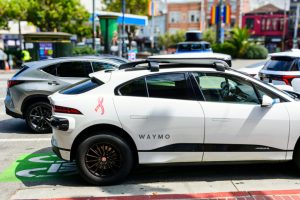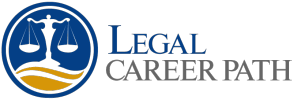Go to Page Section:
Autonomous vehicle (AV) technology is rapidly advancing across California, with companies like Waymo and Tesla leading the way.
Waymo operates a 24/7 robotaxi service across 89 square miles of Los Angeles, from Santa Monica to Downtown, showcasing the growing presence of AVs in urban areas.

While Torrance has not been specifically highlighted in recent reports, its proximity to Los Angeles suggests potential exposure to AV testing and operations.
As AVs become more prevalent, understanding the legal responsibilities and implications of AV-related accidents becomes crucial.
California’s legal framework, including Vehicle Code Section 38750, addresses the testing and deployment of AVs, but determining liability in accidents can be complex, involving manufacturers, software developers, and vehicle operators.
Staying informed about these legal aspects is essential for residents and stakeholders in areas like Torrance.
Legal Framework Governing Autonomous Vehicles in California
California’s legal framework for autonomous vehicles is anchored by Vehicle Code Section 38750, which defines “autonomous technology” as systems capable of driving a vehicle without active human control.
This statute mandates that the Department of Motor Vehicles (DMV) establish regulations for the testing and public deployment of autonomous vehicles, including those without a human driver present.
Manufacturers are required to obtain permits for testing and deployment, and they must report any collisions involving their autonomous vehicles to the DMV.
These regulations aim to ensure the safe integration of autonomous vehicles on public roads by setting clear operational standards and accountability measures.
In the event of an accident involving an autonomous vehicle, California’s pure comparative negligence system comes into play.
Under this legal doctrine, fault can be distributed among multiple parties, including the vehicle’s operator, manufacturer, or software developer.
Even if a plaintiff is partially responsible for the accident, they can still recover damages proportionate to the other party’s degree of fault.
This approach acknowledges the complexities of accidents involving advanced technologies and allows for a more nuanced determination of liability.
Determining Liability in Autonomous Vehicle Accidents
In semi-autonomous vehicles, human operators are expected to remain attentive and ready to take control when necessary.
Despite advancements in driver-assistance technologies, lapses in attention can lead to accidents.
For instance, a case highlighted by Case Barnett Law involved a driver who failed to intervene when their vehicle’s autonomous system misjudged a traffic situation, resulting in a collision.
Such incidents underscore the importance of driver vigilance, even when advanced systems are engaged.
Legal responsibility often hinges on whether the driver acted reasonably under the circumstances, and failure to do so can result in liability for any resulting damages.
Manufacturers and software developers can also be held liable under product liability laws if defects in design, manufacturing, or inadequate warnings contribute to an accident.
For example, Tesla has faced multiple lawsuits alleging that its Autopilot system failed to detect obstacles, leading to crashes.
In one notable case, a German court ruled that Tesla’s advertising of its Autopilot feature was misleading, as the system did not reliably recognize obstacles and could unnecessarily activate its brakes, posing a hazard in city traffic.
Such cases highlight the legal risks manufacturers face if their autonomous systems do not perform as advertised or lack adequate safety measures.
Vehicle owners may be held liable under the principle of negligent entrustment if they allow someone unfit to operate their autonomous vehicle, leading to an accident.
For instance, if an owner permits an unlicensed or impaired individual to use their vehicle’s autonomous features, and an accident occurs, the owner could be held responsible for entrusting the vehicle to an incompetent driver.
This legal concept emphasizes the owner’s duty to ensure that their vehicle is operated safely and by individuals capable of supervising its autonomous functions.
Legal Responsibilities and Liability in Autonomous Vehicle Accidents
Government entities can be held liable for accidents involving autonomous vehicles if road conditions or infrastructure deficiencies contribute to the incident.
For example, poorly maintained roads, unclear signage, or malfunctioning traffic signals can confuse autonomous systems, leading to accidents.
In such cases, a Torrance car crash lawyer would examine whether the city or state failed to uphold its duty to maintain safe road conditions.
If negligence is established, the government entity may be held responsible for damages resulting from the accident.
Reporting and Compliance Requirements
In California, autonomous vehicle (AV) manufacturers are mandated to report any collision involving their vehicles that results in property damage, bodily injury, or death within 10 days of the incident.
This is accomplished by submitting a Report of a Traffic Accident Involving an Autonomous Vehicle (OL 316) to the Department of Motor Vehicles (DMV).
Additionally, manufacturers are required to submit annual disengagement reports detailing instances where the AV system disengaged and human intervention was necessary.
These reports help the DMV monitor the performance and safety of AVs on public roads.
Law enforcement agencies in California follow specific protocols when handling incidents involving autonomous vehicles.
In the event of a collision, officers are instructed to treat the scene similarly to traditional accidents, ensuring public safety and gathering necessary information.
Recent legislation, such as Assembly Bill 1777, signed in 2024, requires AV companies to provide a dedicated hotline for law enforcement to contact in situations where an AV disrupts emergency scenes or is involved in an incident.
This measure aims to facilitate better communication between AV operators and first responders, ensuring the timely resolution of any issues arising from AV operations.
Challenges in Assigning Fault
Determining liability in autonomous vehicle (AV) accidents presents significant challenges, particularly in distinguishing between human error and technological failure.
In semi-autonomous systems, such as Tesla’s Autopilot, drivers are expected to remain attentive and ready to intervene.
However, incidents have occurred where drivers over-relied on these systems, leading to accidents.
For example, in a 2018 crash in Culver City, California, a Tesla operating on Autopilot collided with a stationary fire truck.
Investigations revealed that the driver was inattentive, and the Autopilot system failed to detect the stationary vehicle in time.
Such cases highlight the complexities in attributing fault between human operators and automated systems.
Accessing and interpreting data from AV systems is another hurdle in assigning fault.
AVs generate vast amounts of data, including sensor readings, system logs, and video recordings.
However, this data is often proprietary, and manufacturers may be reluctant to share it due to competitive concerns or potential liability.
Moreover, interpreting this data requires specialized expertise to understand the context and functionality of the AV systems.
In legal proceedings, the lack of transparent access to such data can impede investigations and the fair determination of liability.
Establishing standardized protocols for data sharing and interpretation is essential to address these challenges.


Leave a Reply